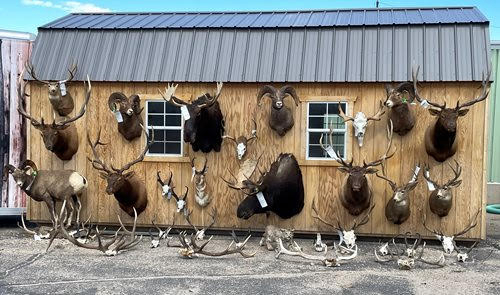Yellowstone Grizzly Hunt Halted – Ruling Still Imminent
A federal judge in Missoula, Mont., has taken a cautious approach to ruling in the Greater Yellowstone Ecosystem grizzly bear delisting. While perhaps overly cautious, the first order in the contentious case is temporary.
U.S. District Court Judge Dana Christensen issued a 14-day temporary restraining order halting grizzly bear hunting that was scheduled to begin on Sept. 1 in Idaho and Wyoming.
While the order halts any hunting of recently delisted grizzly bears in the Greater Yellowstone Ecosystem (GYE) in the two states, it is not a ruling on the merits of the case. The case itself is centered on whether the U.S. Fish and Wildlife Service’s 2017 removal of grizzly bears in the GYE from the Endangered Species Act’s list of “threatened” species is lawful. In effect, the judge is taking more time to decide that question, and not allowing hunting to proceed while he makes that decision. At any point over the next two weeks, the judge could take several steps: make a ruling on the case, extend the temporary restraining order prohibiting hunting or terminate the order and reinstate the scheduled hunting seasons.
In issuing the temporary restraining order, Judge Christensen cites Ninth Circuit Court of Appeals precedent under which the irreparable harm necessary for issuance of temporary restraining order can be the death of a single member of the species, as opposed to harm at the population level.
“This is more red tape than it is scientific wildlife management. Every threshold for delisting has been met and surpassed, the distinct population clause of the Endangered Species Act has been upheld in court and the delisting and management of grizzly bears in Idaho and Wyoming won’t have any impact on separate and still-protected populations of grizzlies in northern Montana or Washington,” said Heusinkveld. “The bottom line is that Greater Yellowstone Ecosystem grizzlies have recovered and are no longer in need of federal protections.”
The Greater Yellowstone Ecosystem population of grizzly bears has surpassed every threshold for recovery, including exceeding population levels. In the Greater Yellowstone Area, a population of 500 grizzly bears was the threshold that the U.S. Fish and Wildlife Service would use as a standard for successfully recovery. Today, the bear population is conservatively estimated at more than 750 (and as high as 1,000 by some counts), far above that threshold, and well above the low of 125 bears in the 1980s.
At stake in the case as a whole is the integrity and intent of the Endangered Species Act. The ESA requires the delisting of a species when it is no longer in danger of extinction, now or in the foreseeable future, in all or a significant portion of its range. The ESA seeks to recover species to the point that extinction is not a foreseeable threat. Environmentalists, animal-rights activists and anti-hunters have used the ESA as a means to keep game species listed indefinitely, although no threat of extinction remains, through various technical legal arguments.
“According to scientists, the grizzly population in the Greater Yellowstone Ecosystem met all delisting criteria and should remain subject to state management,” said Kyle Weaver, RMEF president and CEO, who have partnered with the Sportsmen’s Alliance on the case. “Managing wildlife in line with the North American Wildlife Conservation Model ensures the future of all wildlife. State agencies already successfully manage elk, mountain lions, deer and other wildlife so grizzly bears should fall under that same umbrella as well.”
The arguments of the GYE grizzly case will likely center around a similar ruling in another Endangered Species Act delisting case the Sportsmen’s Alliance has been fighting for a decade, that being the Western Great Lakes wolf case – the question of whether the USFWS adequately considered the impact of delisting the Yellowstone-area bears on the remaining populations across the country.
In the wolf case, the judges on the D.C. Circuit Court of Appeals left wolves ESA listed, but sided with sportsmen and biologists on the fact that distinct populations of animals can be listed and delisted from Endangered Species Act protections – provided that the delisting of one population doesn’t have detrimental impacts to other distinct populations in other regions of the country. The judges ruled that the U.S. Fish and Wildlife Service failed to adequately analyze the impact of delisting the Western Great Lake wolves on other wolf populations. Despite this, the ruling laid out a clear pathway for the Service to successful accomplish a delisting of this type, which could prove beneficial in the GYE litigation as well.
|






